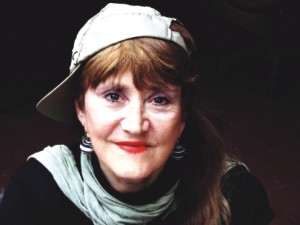|
Photography
An Afternoon with MARTI
Sabhanaz Rashid Diya
 |
Marti, photojournalist and writer. |
There are many ways to introduce Marti. As a photojournalist and writer based in Paris (France) and Pondicherry (India), her works have been exhibited worldwide including London, Paris, Amsterdam, San Francisco, Tokyo, Phnom Penh and Chennai. She has been recently shown at the Chobi Mela V in Dhaka and selected for the Singapore International Photography Festival. Marti’s works are also part of permanent collections, including the Musee de Louvre in Paris and the International Museum of Photography in Switzerland. On another level, Marti is a Penguin author and has published her work in books, newspapers and magazines including PHOTO Magazine, the New York Times, Washington Post, and le Monde-Guardian Weekly. She has won a Rolex citation for her environmental work and is a United Nations ECO SOC representative for NGO's in Geneva. She is particularly concerned about the dying oceans, disappearing nature, and the social conditions of children.
In person, Marti is warm, sociable and extremely energetic. The following is an excerpt from her interview at Drik, taken during Chobi Mela V.
Do you think photography is still largely a man's profession? How do you justify the role of female photojournalists in today's world?
It is unfortunate that photography is still seen in many parts of the world as a man's profession, but that is changing. It is true that women cannot, for example, go to the park at night in Dhaka without being accompanied and take photographs of drug addicts taking narcotics. However as a woman, you have the gift of entering into intimate situations more easily. Besides, the scenario has been changing over the last fifteen years. When I was in Cambodia, I was the only woman photographer around. Today there are many courageous women out there. I think one issue that comes up for women, however, is that of being responsible mothers. When I was in the Cambodian jungles, there were mines all over the place and I had to be careful. I had my small son at home and could not overlook my responsibility as a mother.
Isn't that an unfair situation, where women have to make the sacrifices?
For me, it was not a question of a sacrifice. It was a conscious choice, and that is often one of our strengths as women. We can make conscious choices because we are the caregivers. A good number of the professional photographers in Iraq and Afghanistan, for example, have no children. Some of those who have families at home have financial securities, so their wives and children are taken care of if something happens to them. Yet, there are women who still go out there in spite of their situation. I have been arrested more times than I can count, but I try not to take unnecessary risks. I have to be true to myself on that one. A front page story in the New York Times may not be worth my life. We all struggle everyday of our lives to be ourselves. There are always events that challenge our deepest sense of who we are. For women it's always a particular challenge. When you have young children, there is a huge responsibility, but that doesn't mean you have to give up photojournalism. You might need to take some colleagues or friends with you.

In the era of a digital revolution, there seems to be a photographer at every nook and corner. What are your feelings towards this scenario?
Well of course, in the digital world, everybody is a photographer. We have cell phones. We can record any moment as it unfolds. I think what makes each of us different is how we choose to portray what we see. If you want to be original, look at a small neighborhood as an entire universe and choose a well-defined subject that really interests you. Then, comes the hard part. Say something no one else has ever said. Gradually you will emerge as a fine photographer.
Do you believe good, expensive equipment play any role in shaping a photographer, or producing the best photographs?
I don't think it's about camera equipment at all. Good photography is about observation. Having a creative eye that picks up something unusual, strange, ironic, beautiful, joyful, tragic, or different. The important thing is to have the courage to get out there and do it. The courage to observe and interact with our surroundings, and to shoot lots of pictures and select only a few. Courage is what is essential. It doesn't matter what equipment you're using. It's about an expression of the soul, which can be captured in many ways.
Is there any formula to being a good photographer?
None, except one, and that is absolute integrity. Our photographs should portray the truth, not lies. I always feel I need to be respectful towards my subjects. If you want to photograph someone and that person isn't very willing, something you can figure out through body language and expressions, it's best to back off, unless you're telling a story of socio-political importance. People have a right to their own lives and peace of mind. Stay with the truth and your own integrity. I have spent a while learning about a 8-year old girl named Uma who lives on the edge of a toxic dump in Pondicherry. When you meet Uma, you will see the hardship she goes through. However, that doesn't make her unhappy. When I photograph her, I don't make it appear as though misery is the only truth about her life. I also try to portray the small joys that make her smile!
.Copyright
(R) thedailystar.net 2009
|
|
